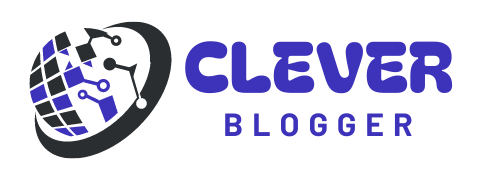Understanding the Basics of High-Quality Animation
Before diving into the technicalities, it’s crucial to grasp the fundamentals of animation. High-quality animation is characterized by smooth motion, realistic or stylistically appropriate character design, engaging storytelling, and the effective use of timing and spacing. These elements are the foundation upon which any successful animation is built.
- Smooth Motion: The fluidity of motion is a hallmark of high-quality animation. Achieving this requires a solid understanding of the principles of animation, particularly the concepts of timing, spacing, and easing.
- Character Design: Well-designed characters not only look appealing but also move and react in a believable manner. Character design involves creating visually compelling characters that resonate with the audience and align with the story.
- Storytelling: A high-quality animation is driven by a compelling narrative. Whether it’s a short commercial or a feature-length film, the story should captivate and engage the viewer.
- Timing and Spacing: These principles govern how fast or slow objects move and how they interact with their environment. Proper timing and spacing can make the difference between a stiff, unrealistic animation and one that feels alive and dynamic.
The Role of Pre-Production in High-Quality Animations
Pre-production is a crucial phase in creating high-quality animations. It involves planning and laying the groundwork for the animation, ensuring that all elements are in place before production begins. Here’s what pre-production typically entails:
- Concept Development: This is where the idea for the animation is born. The concept should be clear, concise, and align with the goals of the project.
- Scriptwriting: A well-written script serves as the backbone of the animation. It outlines the narrative, dialogues, and actions, providing a roadmap for the animators.
- Storyboarding: Storyboards are visual representations of the script. They allow animators to plan out scenes, camera angles, and transitions, ensuring that the animation flows smoothly.
- Character and Environment Design: This involves designing the characters, backgrounds, and props that will be used in the animation. These designs should be consistent with the overall style and tone of the project.
- Animatics: An animatic is a rough version of the animation that combines the storyboard with a temporary soundtrack. It helps in visualizing the timing and pacing of the final animation.
Choosing the Right Animation Style
The style of animation you choose will greatly influence the quality of the final product. Different styles cater to different audiences and purposes. Here are some popular animation styles:
- 2D Animation: Traditional 2D animation, also known as hand-drawn animation, involves creating images on a flat surface. It’s known for its classic, timeless appeal and is still widely used in TV shows, movies, and commercials.
- 3D Animation: 3D animation creates lifelike characters and environments using computer-generated imagery (CGI). It offers greater depth and realism, making it the preferred choice for blockbuster films and video games.
- Stop Motion: Stop motion animation involves physically manipulating objects and photographing them frame by frame. This technique gives a unique, tactile quality to the animation, often used in commercials and indie films.
- Motion Graphics: Motion graphics are primarily used in advertising and web design. They combine graphic design elements with animation to create visually striking content that communicates a message quickly and effectively.
Choosing the right style depends on the project’s goals, audience, and budget. High-quality animation can be achieved in any style as long as the execution is well thought out and polished.
The Importance of a Strong Workflow
A strong workflow is essential for creating high-quality animations. It ensures that the animation process is organized, efficient, and scalable. Here’s a step-by-step guide to developing a robust animation workflow:
- Planning: Start by planning the project in detail. This includes setting timelines, assigning roles, and breaking down the animation into manageable tasks for business.
- Asset Creation: Create all the assets needed for the animation, such as character models, backgrounds, and props. Ensure that these assets are high quality and consistent with the project’s style.
- Animation: Begin animating the scenes. Pay close attention to timing, spacing, and movement to ensure that the animation is fluid and engaging.
- Review and Feedback: Regularly review the animation and seek feedback from peers or clients. This helps identify areas that need improvement and ensures that the animation stays on track.
- Rendering: Once the animation is complete, render the final product. This involves generating the final video file from the animated frames.
- Post-Production: In post-production, add sound effects, music, and any visual effects needed to enhance the animation. This stage also involves editing and refining the final product.
- Quality Assurance: Before delivering the animation, conduct a thorough quality check to ensure that it meets the project’s standards and goals.
Tools and Software for High-Quality Animation
The quality of an animation is often tied to the tools and software used during production. High-quality animations require reliable, feature-rich software that allows animators to bring their visions to life. Some of the top tools and software used in the industry include:
- Adobe Animate: Adobe Animate is a versatile tool that supports both 2D and 3D animations. It’s widely used for creating interactive animations for web and mobile platforms.
- Blender: Blender is an open-source 3D creation suite that’s popular for its powerful features and flexibility. It’s capable of producing high-quality 3D animations and is used in both indie and professional productions.
- Toon Boom Harmony: Toon Boom Harmony is a leading software for 2D animation.
- Autodesk Maya:It offers advanced features for modeling, rendering, and animating, making it a top choice for creating realistic animations.
- Cinema 4D: Cinema 4D is another powerful 3D animation tool, particularly known for its ease of use and integration with other software like Adobe After Effects.
- Moho (Anime Studio): Moho is a popular choice for creating 2D animations. It offers a range of features, including bone rigging and motion tracking, that help streamline the animation process.
Choosing the right software depends on the type of animation you’re creating and your specific needs. High-quality animation is achievable with any of these tools, as long as the animator is skilled in using them.
The Role of Sound Design in Animation Quality
Sound design is a critical but often overlooked aspect of creating high-quality animations. The right sound effects, music, and voice acting can significantly enhance the viewer’s experience and bring the animation to life. Here’s how sound design contributes to animation quality:
- Atmosphere: Sound effects and music set the tone and mood of the animation. Whether it’s a dramatic score for a film or a catchy jingle for a commercial, sound plays a vital role in engaging the audience.
- Characterization: Voice acting adds depth and personality to animated characters. High-quality voice work can make characters more relatable and memorable.
- Timing and Impact: Sound effects are essential for timing and impact. They can accentuate actions, such as footsteps or explosions, making the animation more dynamic and immersive.
- Editing and Mixing: In post-production, editing and mixing the sound are crucial steps to ensure that all audio elements blend seamlessly with the animation.
Investing time and resources into sound design is essential for creating an animation that not only looks great but also sounds professional and polished.
Continuous Learning and Improvement
The animation industry is constantly evolving, with new techniques and technologies emerging regularly. To stay ahead and continue creating high-quality animations, animators must commit to continuous learning and improvement. Here are some ways to do that:
- Stay Updated on Industry Trends: Follow industry news, attend conferences, and participate in online forums to stay informed about the latest developments in animation.
- Learn New Software and Tools: This will not only improve your workflow but also open up new creative possibilities.
- Practice Regularly: Animation is a skill that improves with practice. Set aside time to work on personal projects or experiments to refine your techniques.
- Seek Feedback and Critique: Constructive feedback from peers or mentors is invaluable for growth. Regularly seek critique of your work and use it to identify areas for improvement.
- Expand Your Skill Set: Diversifying your skill set by learning related disciplines, such as graphic design, storytelling, or sound design, can enhance your overall animation quality.
- Study the Work of Others: Understanding their techniques can provide inspiration and insights for your projects.
Conclusion: The Path to High-Quality Animation
Creating high-quality animations is a complex and rewarding process that demands a blend of creativity, technical proficiency, and meticulous attention to detail. By mastering the basics, choosing the right tools, and continuously honing your skills, you can produce animations that captivate and inspire audiences. Whether you’re working on a small personal project or a large-scale production, the principles and practices outlined in this article will help guide you toward creating animations that stand out for their quality and impact.




